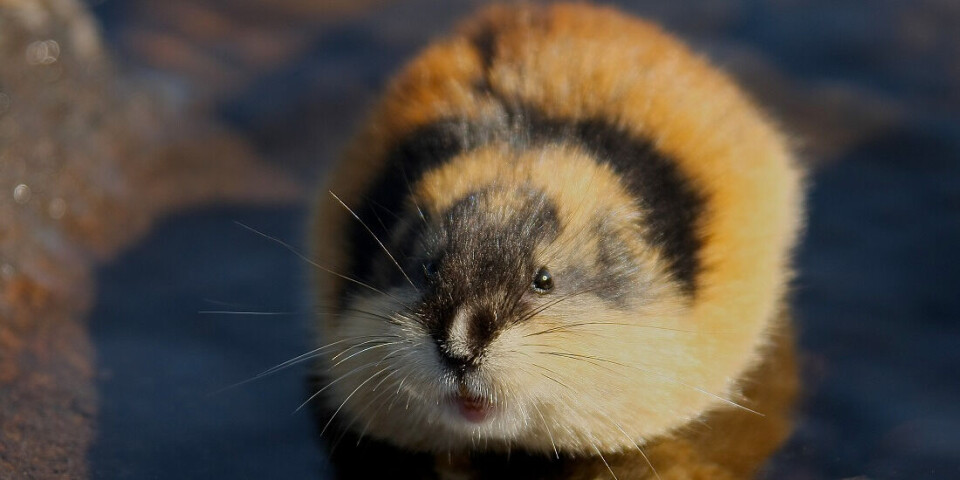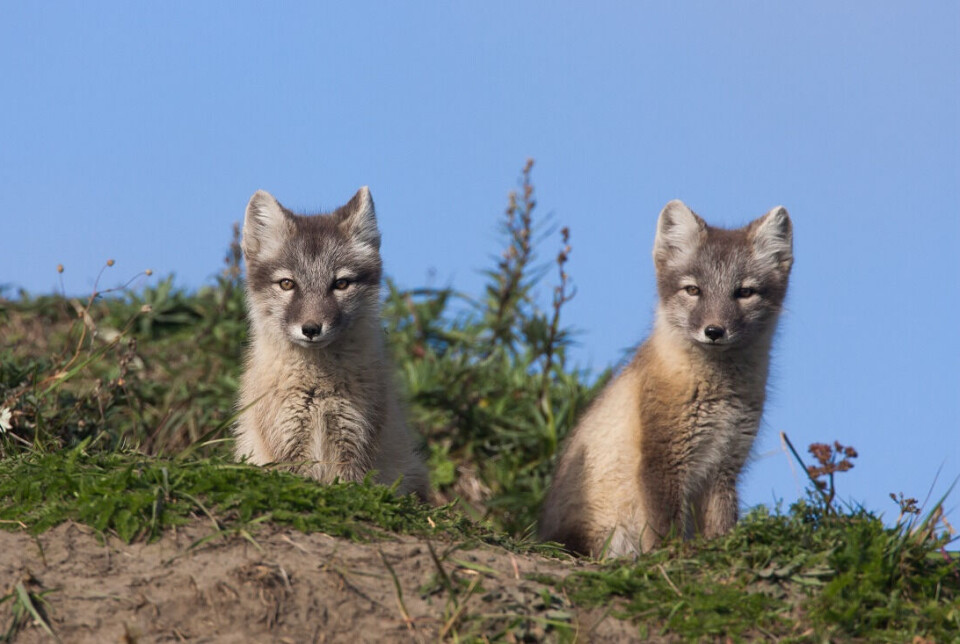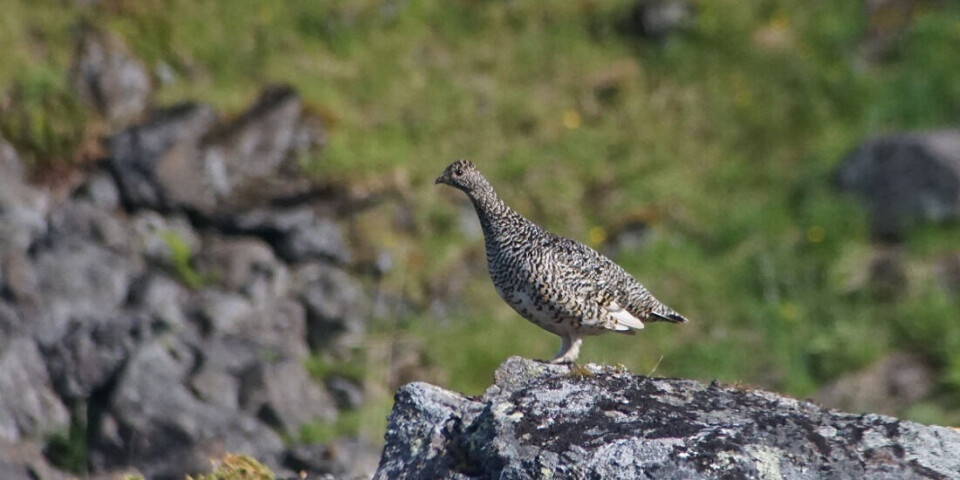THIS CONTENT IS BROUGHT TO YOU BY NTNU Norwegian University of Science and Technology - read more

Lemming years are important for far more than just predators
The number of lemmings varies greatly from year to year. Other species also experience similar fluctuations. Why is this the case, and what happens if lemming years occur less frequently?
The number of lemmings (Lemmus lemmus) in the mountains can fluctuate greatly from one year to the next. This is important for many other species. More predators and birds of prey, for example, do better and often have more offspring than usual when there are plenty of lemmings around.
“For a number of species, we find that the population size, meaning the number of animals of one species in an area, changes according to a cyclical pattern. We regularly see that there is population growth up to a peak, followed by a crash, which means a rapid decline in the population size,” Aline Magdalena Lee says.
She is a researcher at the Gjærevoll Centre for Future Analyses of Biodiversity and an associate professor at the Department of Biology at NTNU.
Population growth leading up to the peak can happen very rapidly or more gradually. The same pattern repeats time after time in a recurring cycle.
In the case of lemmings, these fluctuations seem to occur regularly, at intervals of about three to four years, featuring significant peaks and deep dives. We refer to such fluctuations as cyclic fluctuations.
However, some researchers now fear that the intervals between each lemming year have become longer. Is this the case?

Lemming years are not a thing of the past
“It might seem like it, but it is actually quite hard to assess. In the 1990s and early 2000s, there was an extended period of no lemming years and a lot of people were worried that the phenomenon had come to an end, perhaps due to climate change,” Lee says. She notes that this is not something she has researched herself.
But the cycles have changed again, at least in some parts of the country.
“The fluctuations do not need to be synchronous across Norway as a whole. Often, they are not, and the peaks might occur in the south one year and in the north another year,” Lee says.
There will always be some natural variation in population fluctuations. When peak years occur on average every third or fourth year, a long time series with many years of data is needed to determine whether the pattern has changed in terms of how often the peaks occur or how significant they are.
There are also greater variations in the number of lemmings in some areas than in others, so predicting how this will develop over time can be challenging, she explains.
Lemming years are important for several species
But why are these fluctuations important?
“The fluctuations are part of a complicated natural system that has developed and adapted over a very long period of time. The system has therefore adapted to the fluctuations and other species can depend on them. If they change, it can affect the entire food chain,” Lee explains.

Lemmings are considered one of the keystone species in Nordic mountains. They constitute an important food source for many predators.
“Good access to this food source is absolutely essential for many species so that they can raise their young,” she says.
Some species mainly breed during peak rodent years
Some species, like arctic foxes and snowy owls, primarily breed during years with high levels of small rodents. Other species have more and larger litters in such years.
The snowy owl will often travel over large areas in search of good nesting conditions and can therefore be completely absent in years when there are few small rodents around. As these are species with relatively long lifespans, their populations can be maintained with good breeding years ocurring every three or four years.
“However, if the peaks were to vanish completely, it would be difficult for these species to survive. When there are few small rodents around, the predators need to find other prey to survive. This affects the populations of other small prey in the mountains, such as grouse," Lee says.
Years with high lemming populations also affect vegetation in the mountains, which can be crucial for the germination and biodiversity of plants.
Changes in population fluctuations can, therefore, have significant consequences with ripple effects that can be hard to predict.
Certain predators fluctuate in relation to lemmings
In predator-prey cycles, we can see the same pattern for prey and predators or birds of prey for which the prey is the main food source.
But the fluctuations have shifted in relation to one another, so the predator peaks are occurring after the peaks for their prey. This is not so strange when you realise why.
“This is because a peak in prey population results in a large supply of food for the predator, and with it good conditions for breeding. This is why we experience a significant growth in the predator population after such peak years,” Lee explains.
For the prey animals, peak years are characterised by intense competition for food and resources. Consequently, a large number of them die quickly. Stress and infectious disease can also play a role.

“As the predator population grows, the prey will experience more predation and the overall result is that the prey population crashes,” Lee says.
This, in turn, leads to food shortages for the predators. And the predator population declines again.
With fewer predators and less competition, the prey population starts to build up again, and the cycle repeats itself.
The snowshoe hare and lynx in North America are a classic example of this phenomenon that has been extensively studied.
Many factors at play
In practice, it is still difficult to determine exactly what controls dynamic population fluctuations in various species. There are nearly always multiple species involved and there are many possible factors at play affecting the natural system.

Each prey species serves as food for several predator species, and predators feed on more than just one prey species. There are also many things happening at the same time that can have an impact.
“When we experience the really big peaks in lemming years, it is often linked to the fact that lemmings can breed under the snow, so climate and snow conditions can also have a major impact on lemming dynamics in various areas,” Lee says.
In addition, plants can react to high levels of grazing by producing anti-grazing agents, which can have an additional impact on prey populations.
“I don’t have the exact answer as to what it is that controls the lemming cycles. But it is most probably a combination of various factors, with predators being one of the most important factors,” she says.
More content from NTNU:
-
More than 120,000 Norwegians suffer from work-related anxiety
-
Forever chemicals affect ducklings' genes while they are still in the egg
-
Why are pregnant women in Norway so worried?
-
Politics on Facebook: Populist parties choose divisive issues on purpose
-
Social media is connected to cyberbullying – but not how we thought
-
Forskere ved NTNU får nesten 24 millioner av EU for å lage nye strømomformere





































